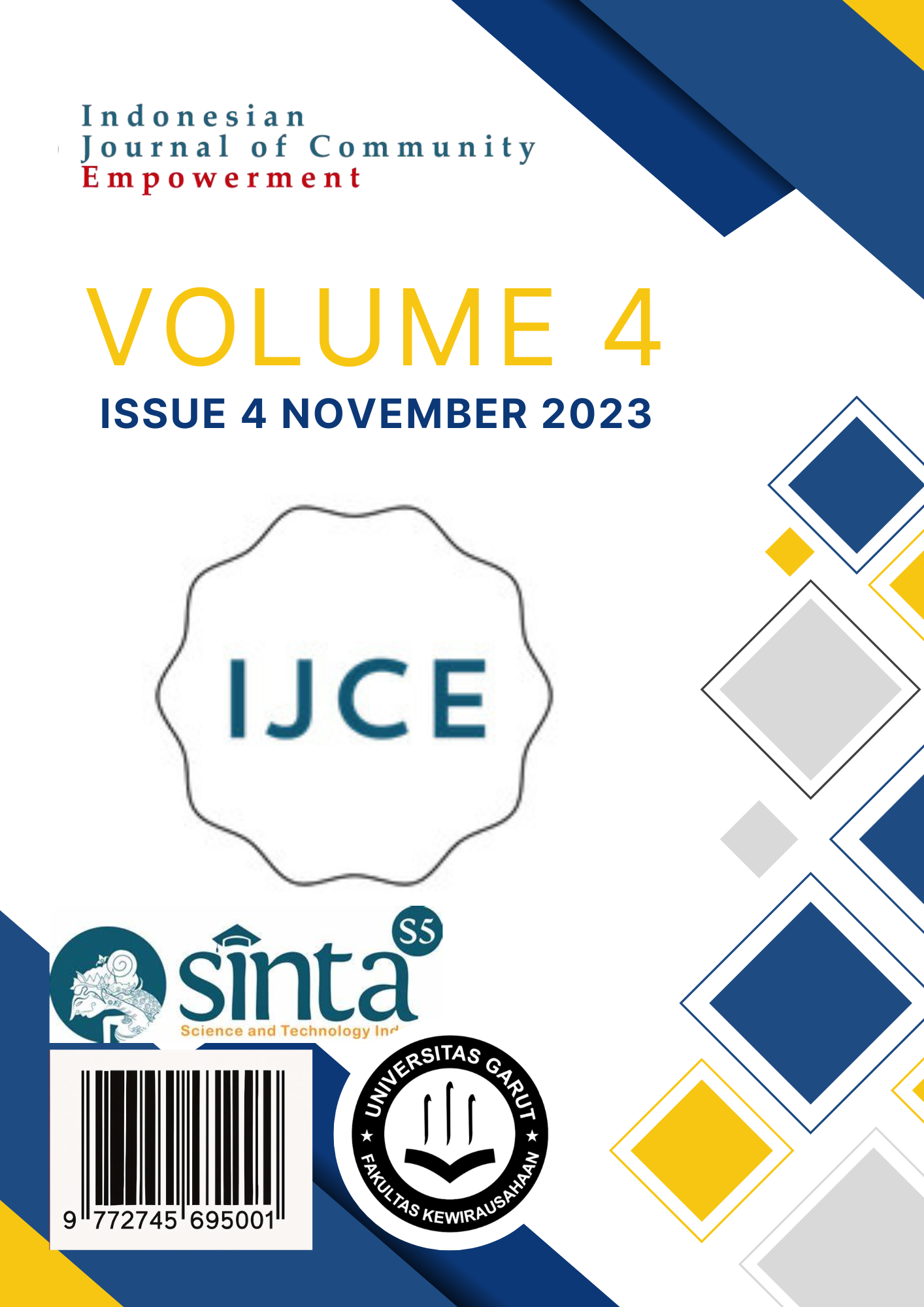Implementation of Technology-Based Learning Media for Teachers at Leading Schools in Limbangan District
Abstract
In this context, Limbangan, as a district focused on superior education, needs to ensure that teachers have adequate access to and understanding of the use of technology in the teaching and learning process. Since the COVID-19 pandemic, many schools have shifted to online learning, forcing teachers to rapidly adapt their teaching methods. The community service method for this project is designed to deliver and implement technology-based learning media for teachers in superior schools in Limbangan District. This method is descriptive, encompassing various structured steps to achieve the objectives of this community service. The following is a detailed section of the method used. In a survey, students felt more motivated and interested in learning when technology was used in their lessons. This indicates that technology not only benefits teachers but also positively impacts the student learning experience. This skill improvement aligns with research findings showing that appropriate training interventions can optimize teachers' mastery of technology. Therefore, ongoing training should be considered an integral part of teachers' future professional development.
References
M. R. N. Hilmawati and R. Kusumaningtias, “Inklusi Keuangan Dan Literasi Keuangan Terhadap Kinerja Dan Keberlangsungan Sektor Usaha Mikro Kecil Menengah,” Nominal Barom. Ris. Akunt. dan Manaj., vol. 10, no. 1, pp. 135–152, 2021, doi: 10.21831/nominal.v10i1.33881.
F. Gondwe, “Technology Professional Development for Teacher Educators: A Literature Review and Proposal for Further Research,” Sn Soc. Sci., vol. 1, no. 8, 2021, doi: 10.1007/s43545-021-00184-9.
F. I. Maulana, A. Purnomo, F. C. Pratama, V. P. Widharta, and ..., Scientometric analysis of digital entrepreneurship through bibliometric visualizing in the last 10 years. eprints.unmer.ac.id, 2022.
R. Ramesh, “Media Utilisation Among Secondary Trainee Teachers in Their Teaching-Learning Activities,” Int. J. Res. -Granthaalayah, vol. 9, no. 2, pp. 275–280, 2021, doi: 10.29121/granthaalayah.v9.i2.2021.3629.
J. R. Dakers, “What Is Technology Education?,” Lumat Int. J. Math Sci. Technol. Educ., vol. 11, no. 4, 2024, doi: 10.31129/lumat.11.4.2207.
A. Hidayat, T. Chandra, and R. Putra, “Service Quality on Consumer Satisfaction and Non-Wage Consumer Loyalty in BPJS Ketenagakerjaan Pekanbaru Panam Branch,” J. Appl. Bus. Technol., vol. 3, no. 2, pp. 166–176, 2022, doi: 10.35145/jabt.v3i2.101.
M. A. Wiguna and S. Padmantyo, “Pengaruh Kualitas Pelayanan Dan Harga Terhadap Loyalitas Pelanggan Yang Dimediasi Oleh Kepuasan Pelanggan,” J. Lentera Bisnis, vol. 12, no. 2, p. 379, 2023, doi: 10.34127/jrlab.v12i2.766.
P. Erlyn, B. Hidayat, A. Fatoni, and H. Saksono, “Nutritional interventions by local governments as an effort to accelerate stunting reduction,” J. Bina Praja, 2021, [Online]. Available: http://jurnal.kemendagri.go.id/index.php/jbp/article/view/1134.
V. Paul, R. Thapliyal, and R. Walia, “Exploring the Opportunities and Challenges of Digital Learning in India,” Webology, 2021, doi: 10.29121/web/v18i2/9.
D. Ifenthaler, D. Gibson, D. Prasse, A. Shimada, and M. Yamada, “Putting Learning Back Into Learning Analytics: Actions for Policy Makers, Researchers, and Practitioners,” Educ. Technol. Res. Dev., vol. 69, no. 4, pp. 2131–2150, 2020, doi: 10.1007/s11423-020-09909-8.













